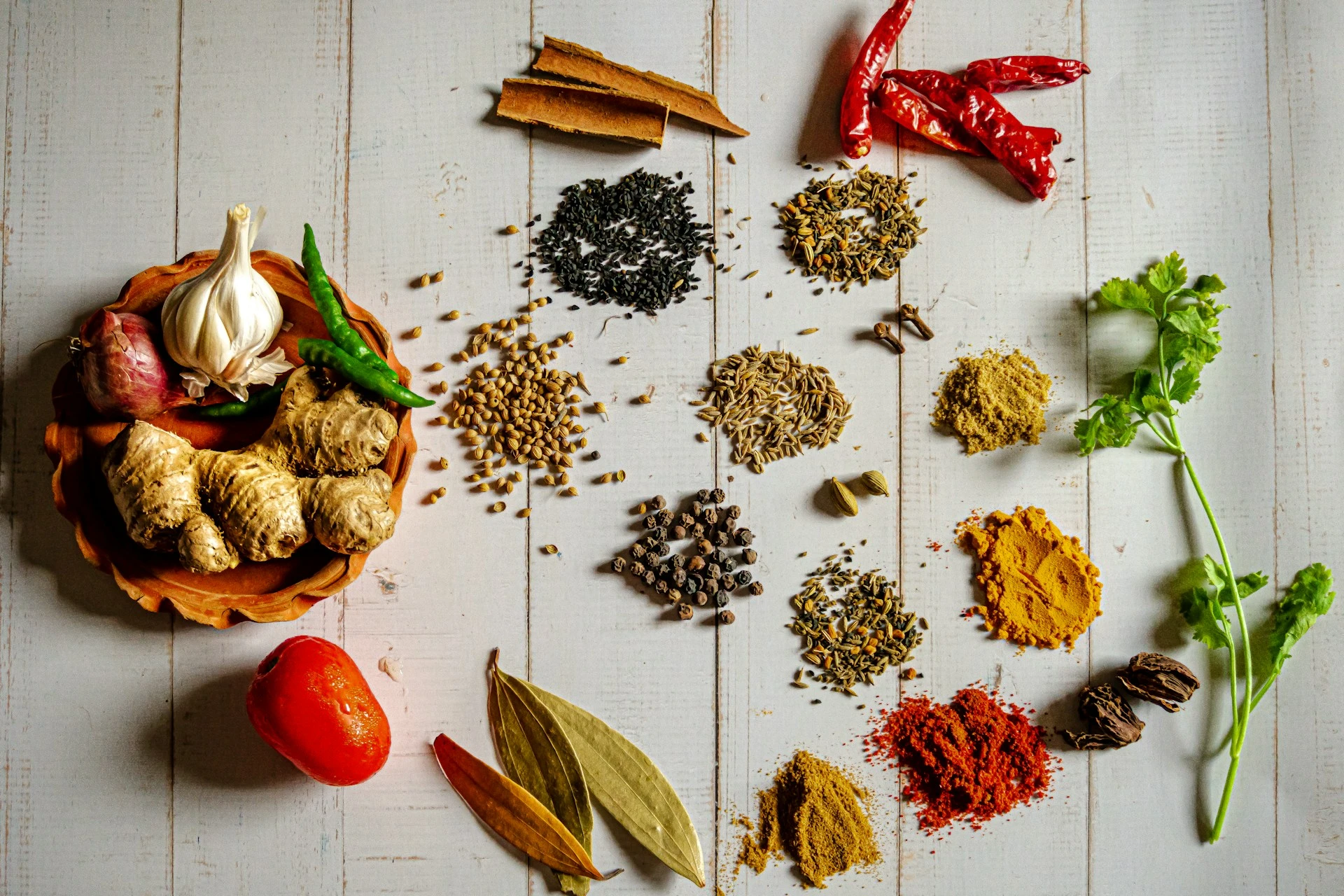Table of Contents
Managing blood sugar doesn’t always have to involve complicated diets or expensive supplements. Sometimes, powerful tools are already in your kitchen.
Certain herbs and spices have been shown to support glucose control, reduce inflammation, and even improve insulin sensitivity—making them valuable additions to a diabetes-friendly lifestyle.
For people with diabetes or pre-diabetes, including specific herbs and spices in daily meals can provide natural support for blood sugar regulation. While they’re not a substitute for medication or a balanced diet, they can complement your routine in safe, flavorful ways.
This article explores the most studied and effective herbs and spices for blood sugar management, how they work, and how to use them.
Why Herbs and Spices Matter
Herbs and spices are more than just flavor enhancers. They contain bioactive compounds, including antioxidants, polyphenols, and anti-inflammatory agents that can:
- Improve insulin sensitivity
- Slow the absorption of carbohydrates
- Reduce oxidative stress
- Support metabolism
- Enhance overall nutrient intake
Unlike some foods, herbs and spices offer big health benefits with minimal calories or carbs, making them ideal for blood sugar–friendly meals.
Top Herbs and Spices That May Help Regulate Blood Sugar
1. Cinnamon
How it helps:
Cinnamon contains compounds that mimic insulin and increase glucose uptake by cells. It may also slow the breakdown of carbohydrates in the digestive tract, reducing post-meal blood sugar spikes.
Best type:
Ceylon cinnamon (also called “true cinnamon”) is preferred over cassia due to lower levels of coumarin, which can be harmful in high doses.
How to use:
Sprinkle on oatmeal, yogurt, or smoothies. Add to coffee or herbal tea. Use in baking and spice blends.
2. Turmeric
How it helps:
The active compound curcumin in turmeric has anti-inflammatory and antioxidant effects. Studies suggest it can reduce insulin resistance and help maintain glucose homeostasis.
How to use:
Add to curries, soups, scrambled eggs, or golden milk (turmeric latte). Combine with black pepper to enhance absorption.
3. Fenugreek
How it helps:
Fenugreek seeds are rich in soluble fiber and compounds that can improve insulin function and slow carb absorption. Some studies show reduced fasting blood sugar and HbA1c levels.
How to use:
Soak fenugreek seeds overnight and consume in the morning. Add to Indian-style dishes or use ground fenugreek in spice blends.
4. Ginger
How it helps:
Ginger may enhance insulin sensitivity and reduce fasting blood glucose levels. It also helps manage inflammation and digestion.
How to use:
Grate fresh ginger into tea, stir-fries, soups, or smoothies. Use powdered ginger in baking or spice rubs.
5. Garlic
How it helps:
Garlic may help lower fasting blood glucose and improve cholesterol levels. It also supports heart health, which is especially important for diabetics.
How to use:
Use fresh garlic in sautéed dishes, roasted vegetables, dressings, and sauces. Garlic powder can also be added to rubs or marinades.
6. Holy Basil (Tulsi)
How it helps:
This adaptogenic herb is traditionally used in Ayurvedic medicine. It may lower fasting blood sugar and reduce stress-related glucose spikes.
How to use:
Steep fresh or dried holy basil leaves in tea. It’s also available in capsule or extract form.
7. Oregano
How it helps:
Oregano is rich in antioxidants and may slow the breakdown of carbs into simple sugars, helping prevent rapid blood sugar increases.
How to use:
Add dried oregano to salads, pasta dishes, soups, and roasted meats. Fresh oregano can be used in sauces or infused in oils.
8. Rosemary
How it helps:
Rosemary contains polyphenols that may enhance insulin activity and reduce oxidative stress.
How to use:
Add fresh or dried rosemary to roasted vegetables, chicken, or olive oil marinades.
9. Aloe Vera (used internally)
How it helps:
When consumed in small amounts, aloe vera juice or extract may help lower blood sugar and improve insulin sensitivity.
Caution:
Use only food-grade aloe vera and consult your doctor before internal use. It may interact with medications.
How to Add Herbs and Spices to a Diabetes-Friendly Diet
Incorporating these natural ingredients into your routine doesn’t require drastic changes. Small, daily habits make a difference over time.
Tips for adding them to your meals:
- Start small: Add one new spice each week to see how your body responds.
- Use them in place of salt or sugar to enhance flavor without adding glucose spikes.
- Try spice blends: Make your own or use premade ones (check for added sugars).
- Flavor healthy carbs: Add herbs and spices to whole grains, beans, and vegetables to make them more satisfying.
- Create infusions and teas: Herbal teas with ginger, cinnamon, or holy basil offer health benefits with no calories.
Herbs and spices can increase the palatability of healthy dishes, making it easier to stick to a balanced eating plan.
Safety Considerations
While herbs and spices are natural, they’re still biologically active—and in some cases, potent.
Keep in mind:
- Monitor blood sugar when introducing new herbs regularly. Some may enhance the effects of medications.
- Consult your doctor before using concentrated supplements, especially if you take insulin or oral diabetes medications.
- Use culinary amounts: Stick with typical food preparation doses unless advised otherwise.
- Watch for interactions: Garlic, turmeric, and ginger can thin the blood, which may interact with anticoagulant therapy.
Used wisely, herbs and spices are a safe, flavorful way to support metabolic health.
Scientific References
- Allen, R. W., et al. (2013). Cinnamon use in type 2 diabetes: an updated systematic review and meta-analysis. Annals of Family Medicine, 11(5), 452–459.
- Wickenberg, J., et al. (2010). Effects of cinnamon and ginger on blood glucose and lipids in type 2 diabetes. European Journal of Clinical Nutrition, 64(6), 587–593.
- Medagama, A. B. (2015). The glycaemic outcomes of turmeric (Curcuma longa) and curcumin in diabetes mellitus: A systematic review and meta-analysis. Journal of Functional Foods, 17, 14–29.

Leave a Reply